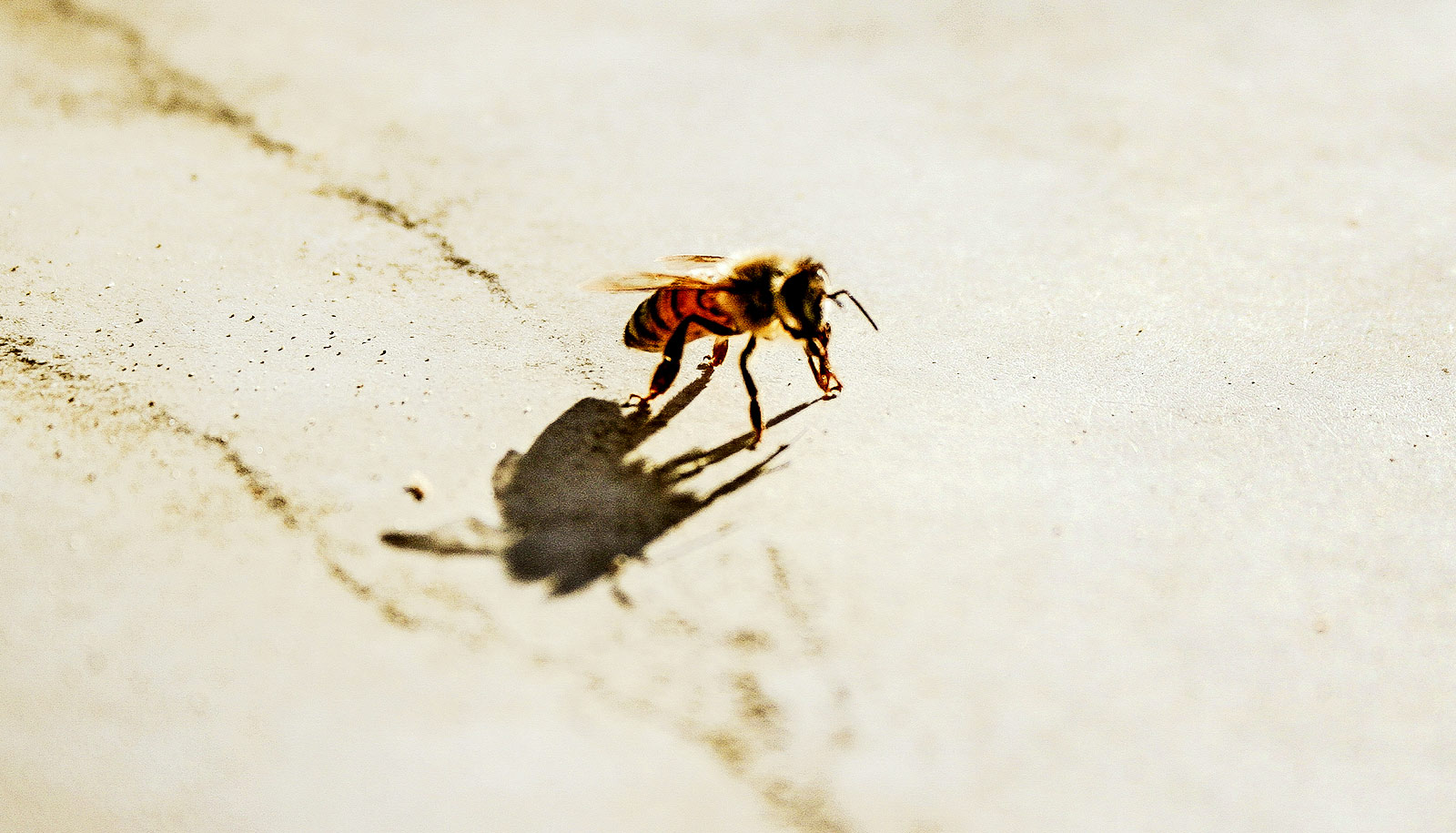During the solar eclipse on August 21, 2017, bees stopped buzzing, according to new research.
At 16 points along the path of the total solar eclipse, tiny microphones—each about the size of a USB flash drive—captured a unique biological phenomenon. As Earth fell into complete darkness, the bees fell silent.
“Getting dark in the middle of the day is not something that happens in a bee’s normal life,” says lead researcher Candace Galen, professor of biological sciences in the College of Arts and Science at the University of Missouri.
“It’s a behavioral miscue,” Galen says. “Here darkness is a cue for night, that a bee is familiar with, but it’s coming at the wrong time of the day. Did they use it as a cue or not, even if it is completely out of context? What we found is yes, they do.”
Millions of Americans paused that August afternoon to watch the eclipse. As it passed overhead, researchers buzzed into action assisted by approximately 400 people—scientists, volunteers, and elementary school students and teachers in Missouri, Idaho, and Oregon, including over 200 elementary school students and teachers from Columbia Public Schools in Missouri—gathering audio data on the behavior of bees.
At each of the 16 locations, these groups placed the microphones near bee-pollinated flowers and away from human-generated traffic.
Previous research conducted on bee behavior notes that bees commonly fly slower at dusk and return to their colonies at night. In this study, researchers found that while bees completely stopped buzzing during totality, they continued to fly during the periods of reduced light that occur in the phases of a partial eclipse.
“It’s a soundscape,” Galen says. “What we have is a buzz that is longer. Either the bees were flying more slowly or making longer flights.”
The study appears in the Annals of the Entomological Society of America.
A Julena Steinholder Duncombe mini-grant from the American Astronomical Society supported the work. The content is solely the responsibility of the authors and does not necessarily represent the official views of the funding agencies.
Additional researchers from the University of Missouri, Lincoln University, and Willamette University in Oregon contributed to the work.
Source: University of Missouri



